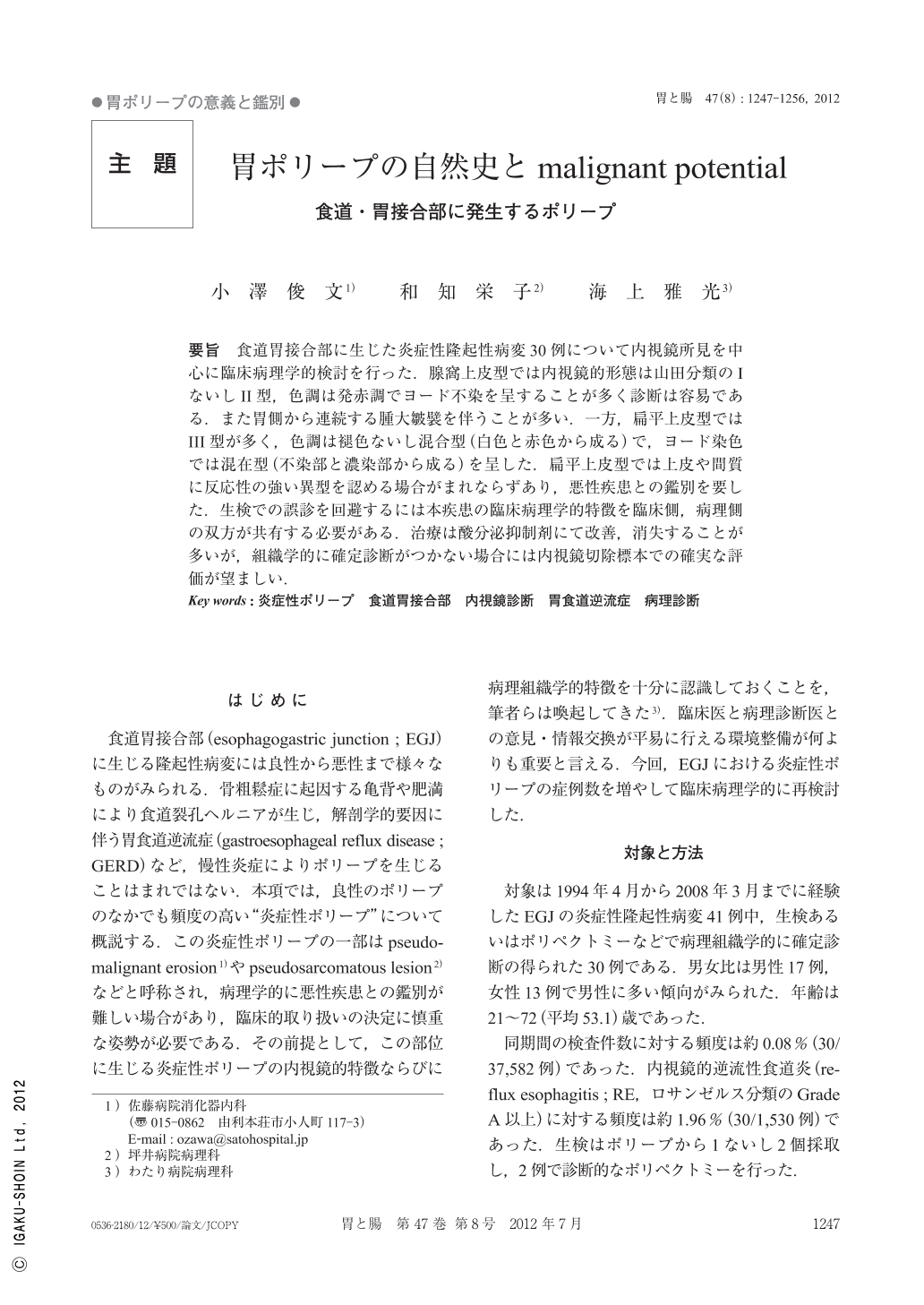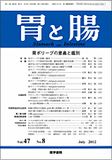Japanese
English
- 有料閲覧
- Abstract 文献概要
- 1ページ目 Look Inside
- 参考文献 Reference
- サイト内被引用 Cited by
要旨 食道胃接合部に生じた炎症性隆起性病変30例について内視鏡所見を中心に臨床病理学的検討を行った.腺窩上皮型では内視鏡的形態は山田分類のIないしII型,色調は発赤調でヨード不染を呈することが多く診断は容易である.また胃側から連続する腫大皺襞を伴うことが多い.一方,扁平上皮型ではIII型が多く,色調は褪色ないし混合型(白色と赤色から成る)で,ヨード染色では混在型(不染部と濃染部から成る)を呈した.扁平上皮型では上皮や間質に反応性の強い異型を認める場合がまれならずあり,悪性疾患との鑑別を要した.生検での誤診を回避するには本疾患の臨床病理学的特徴を臨床側,病理側の双方が共有する必要がある.治療は酸分泌抑制剤にて改善,消失することが多いが,組織学的に確定診断がつかない場合には内視鏡切除標本での確実な評価が望ましい.
The aim of this examination was to investigate the correlation of the endoscopic findings with pathologic findings of the IEGP(inflammatory esophagogastric polyp). We examined 30 cases of IEGP in the EGJ(esophagogastric junction), and they were divided into two groups histologically : i.e. foveolar epithelium type and squamous epithelium type. Foveolar epithelium type(F-type)frequently formed I or II type protrusion in Yamada's classification endoscopically. F-type often shows reddish and negative for iodine staining, in addition, it is accompanied with enlarged gastric folds. Squamous epithelium type(S-type)often shows type III or II of Yamada's classification endoscopically, mixed color pattern(reddish and paler color)and it's iodine staining shows a mixed pattern which is similar to a soccer ball. S-type is occasionally difficult to differentiate from reactive atypia and malignant change, histologically. We should treat these polyps using PPI initially because it is supposed that IEGP has originated in GERD(gastroesophageal reflux disease). On the other hand, it is recommend to carry out endoscopic resection more actively when, in difficult cases, it is hard to make a definite diagnosis by relying only on biopsied specimens.

Copyright © 2012, Igaku-Shoin Ltd. All rights reserved.


